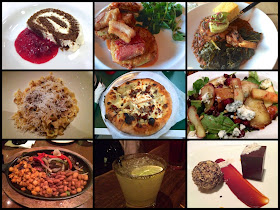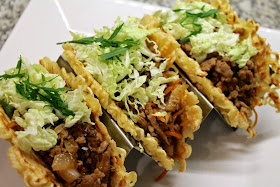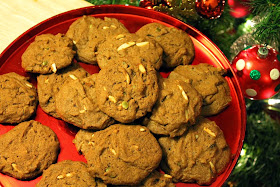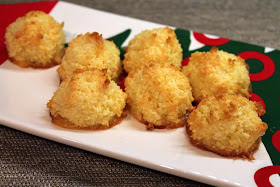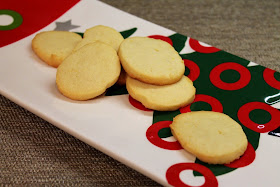The D.C. restaurant scene continued its dynamism this year. Last year, I wrote about how 2013 was a landmark year for new restaurants; this year felt no different as D.C. welcomed places like DBGB, Fiola Mare, The Partisan and Rural Society. The slate of openings, however, was also accompanied by a number closures, most notably one the city's four-star restaurants, CityZen, and a beloved personal favorite, Palena.
This year we visited restaurants in D.C., New York, Portland, Dallas and Santa Fe, and found gems in all of them. Here are some of our very favorites.
 |
| Fried Green Tomatoes, Macon Bistro & Larder |
Best Starter: Fried Green Tomatoes, Macon Bistro & Larder (D.C.). I'd never had fried green tomatoes before trying them at Macon Bistro and Larder, but I'd always wanted to try them. I quickly became a fan of Macon's thick slabs of green tomato fried to perfection and served with smoky chunks of meaty bacon and tomato aioli. Although Macon has plenty of interesting starters, this has become our must-have when we go there. Honorable mentions: Roasted Butternut Squash with Pumpkin Seeds, Le Verdure at Eataly (NYC); Pickled Beet Soup with Cherry Compote and Dried Corn Crumble, Mitsitam Cafe at The Smithsonian National Museum of the American Indian (D.C.); Tableside Guacamole, Oyamel (D.C.).
Best Salad: Insalata di Mele con Gorgonzola, Coppi's Organic (D.C.). I love apples in salad, and this creation featured roasted spiced apples with pine nuts, gorgonzola cheese and bitter mesclun was a spot-on balance of flavors. Honorable mentions: Caesar Salad with Fried Oysters, Aggio (D.C.); Roasted Carrot and Kale Salad with Chestnuts, Pistachios and Buttermilk Dressing, Bread Feast at Bread Furst (D.C.); Grilled Bitter Greens with Pine Nuts, Currants and Aged Balsamic Vinegar, Le Verdure at Eataly; Black Kale, Apple and Warm Pancetta, Lupa Osteria Romana (NYC); Bibb Lettuce with Red-Wine-Poached Pears and Burrata, Thally (D.C.).
Best Pasta: Mafaldine with Pork Ragu, Lupa Osteria Romana. Lupa has been our favorite New York City restaurant for years. The Greenwich Village outpost in the Batali-Bastianich restaurant collective excels at making great pasta and this hearty pasta special we enjoyed early this year continues to uphold its tradition of quality. Honorable mentions: Chittara with Meatballs and Ragu Pomadoro, Aggio; Strip Steak Lasagna Béchamel, Coppi's Organic.
Best Entree: Grilled Sweet-Tea-Brined Pork Chop, Salt Air (Rehoboth Beach, Del.). We enjoyed a lot of good entrees, so it's hard to choose a favorite, but we were particularly taken with Salt Air's flavorful pork chop topped with charred scallion honey-butter and served with the wonderful accompaniments of smoky bacon beans, collards and corn bread. We've been going to Rehoboth Beach for years, but just visited Salt Air for the first time this year. It won't be our last. Honorable mentions: Shenandoah Valley Pork Shoulder with Potatoes, Mushrooms and Braised Red Cabbage, Bread Feast at Bread Furst; Grilled Chinook Salmon, Clyde Common (Portland, Ore.); Barbecued Brisket, Lockhart Smokehouse (Plano, Tex.); Fried Chicken with Waffles, Macon Bistro & Larder; Steak Fajitas, La Plazuela (Santa Fe, N.M.); Wine-Braised Beef Shortribs with Mushrooms and Parsnip Puree, Tía Pol (NYC).
Best Pizza: The Smoky, Comet Ping Pong (D.C.). We rediscovered Comet Ping Pong this year as a really great place to spend an hour or two on a Sunday afternoon for great pizza and beer. It's hard to pick a favorite pizza. I mentioned The Smoky, made from bacon, smoked mozzarella and smoked mushrooms, a pizza that teases your nose before your taste buds. But we also love the sausage and potato pie Time-Out, the sausage and pepper Stanley and the meatball and tomato Jimmy. Honorable mentions: Gorgonzola Pizza, Arcuri (D.C.); Everything but Anchovy Pizza, Nicola Pizza (Rehoboth Beach, Del.); Salciccia Dolce, Vezzo Thin Crust Pizza (NYC).
Best Dessert: Bûche de Noël, Bread Feast at Bread Furst. I didn't write a post about Bread Feast--the pop-up from former Palena Chef Frank Ruta that set up weekly dinners this fall in my neighborhood bakery Bread Furst--because I didn't visit until its final night. This is good news though: Ruta has a new gig next year in Georgetown cooking at Capella. Since this post is about looking back, I'm happy to share that Bread Feast was fantastic and has me primed and ready for Ruta's next act. This dessert was one of the evening's standouts: gingerbread rolled with cream cheese frosting and served with cranberry ginger sauce. Absolutely divine. I'm not sure if Ruta, his sous chef Aggie Chin or the bakery was responsible for this--perhaps it was a collaboration, which might explain why it was so divine. Honorable mentions: Hazelnuts and Mascarpone in Chocolate with Coffee Orange Gelato, Aggio; Twix Mousse Pie, Ripple (D.C.). Honorable mentions: White Chocolate Ice Cream Pie, Clyde Common; Raspberry Tiramisu, Coppi's Organic; Blackberry Cobbler, Macon Bistro & Larder.
Best Cocktail: Smoked Sage Margarita, Secreto (Santa Fe, N.M). This cocktail has just about everything going for it that I like in a cocktail. First off, it's a margarita, a drink I can pretty much never turn down. Second it's full of smoky flavors, which I love, and third, it's got an herbal component, which I find so refreshing and fun in cocktails. That Santa Fe's Secreto is just an all-around great bar with friendly staff and other great drinks makes this easily our favorite cocktail experience this year, and we had a lot of really great ones. I even tried making this myself. Honorable mentions: The Chairman, Aggio; Cima Coppi, Coppi's Organic; Avocado Margarita, Meso Maya (Dallas); Amaretto Sour, Pepe le Moko (Portland, Ore.); Ms. Rosemary Bulleit, Thally.
Best Service: Macon Bistro & Larder. Macon is a busy place, but every time we visited we felt welcomed and cared for. The servers don't just bring food, they offer helpful suggestions, show enthusiasm for the food and, importantly, a desire to please. Honorable mentions: Aggio, La Plazuela, Salt Air, Thally.
Best Overall Experience: Macon Bistro & Larder. We have felt so fortunate to welcome this Southern-meets-French bistro to our neighborhood. I love its style and its food, which so far has always been excellent. It's become one of our new favorite hangouts, especially for celebratory occasions. Honorable mentions: Aggio, Bread Feast at Bread Furst, La Plazuela, Salt Air.

